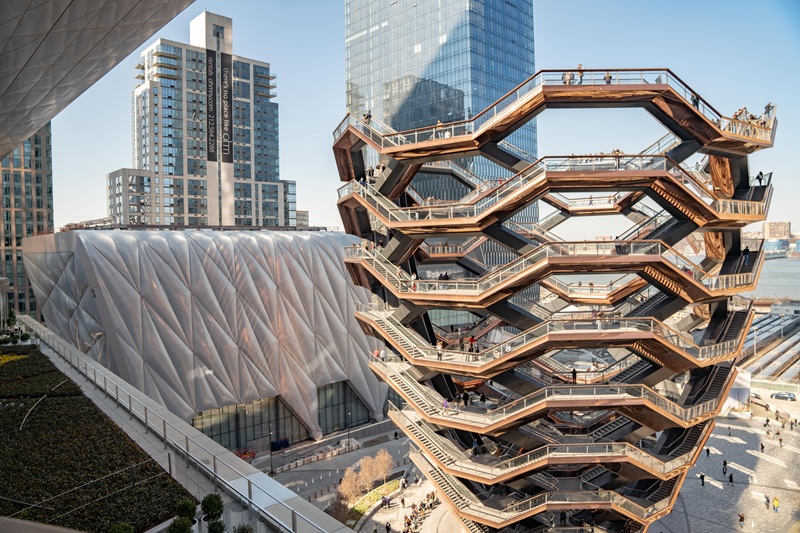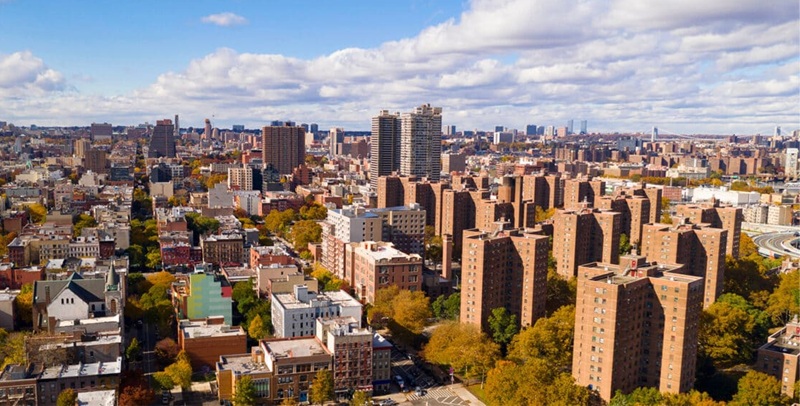
Hudson Yards is one of the most ambitious urban redevelopment projects in Manhattan, reshaping the city’s skyline and creating a new, vibrant neighborhood. Located on the western edge of Midtown Manhattan, this 28-acre area, which was once home to railway yards and industrial spaces, has been transformed into a bustling district of luxury residential towers, commercial spaces, retail outlets, cultural institutions, and public parks.
The Vision for Hudson Yards
The Hudson Yards development is a product of years of planning and strategic investment. The area is bounded by the Hudson River to the west, 10th Avenue to the east, and 30th to 34th Streets to the north and south. The site was originally developed in the 19th century as part of the railroad network, but over time, it became underutilized, despite its prime location. The project was conceived to revitalize the space, blending modern architecture with mixed-use facilities to create a destination for work, living, and leisure.
Major Components of Hudson Yards
- Residential and Commercial Towers: At the core of Hudson Yards are its striking skyscrapers, such as 15 Hudson Yards, 35 Hudson Yards, and 10 Hudson Yards. These buildings house luxury apartments, high-end office spaces, and a selection of restaurants, shops, and entertainment venues. The development is home to a diverse set of tenants, from multinational corporations to tech startups.
- The Vessel: One of the most recognizable structures in the development, The Vessel is a massive, honeycomb-like sculpture designed by architect Thomas Heatherwick. Standing at 150 feet tall, it features a series of staircases that visitors can climb for panoramic views of the surrounding area, including the nearby High Line park and the Hudson River.
- The Shed: An innovative cultural institution located within Hudson Yards, The Shed is a dynamic venue designed to host a range of artistic performances, exhibitions, and events. Its design allows it to expand and contract, with a retractable shell that can be adjusted to accommodate different performances and gatherings. The Shed has become an important hub for arts and culture in New York City.
- Retail and Dining: Hudson Yards is home to one of the city’s newest and most impressive shopping centers, featuring high-end brands like Cartier, Louis Vuitton, and Neiman Marcus. The development also includes a variety of dining options, from casual eateries to Michelin-starred restaurants, offering visitors an exciting array of culinary experiences.
- Public Spaces and Green Areas: The development integrates several green spaces, such as the Hudson Yards Public Square & Gardens. This lush, open area provides a serene environment for residents and visitors to relax, while also serving as a venue for public events and activities. These public spaces are designed to encourage community interaction and provide a break from the surrounding urban environment.
- Transportation Infrastructure: The neighborhood’s accessibility has been greatly enhanced with the construction of the 7 subway line extension, which opened in 2015. This expansion allows direct access to Hudson Yards from Midtown Manhattan, facilitating ease of travel for residents and workers. Additionally, the development is well-connected to the rest of the city via various transportation options, including buses and bike lanes.
The Impact of Hudson Yards
Hudson Yards has quickly become a symbol of New York’s ongoing evolution as a global metropolis. It represents the city’s continued growth and innovation, offering a unique combination of residential, commercial, and cultural spaces in one cohesive environment. The project has also spurred further development in the surrounding neighborhoods, including the revitalization of the Chelsea area and the expansion of the High Line park.
Critics of the development have raised concerns about its potential to gentrify the neighborhood and drive up property prices. Some argue that the focus on luxury living and commercial spaces could price out longtime residents, changing the character of the area. However, proponents believe that Hudson Yards offers much-needed infrastructure and economic opportunities for the city, making it an important addition to Manhattan’s urban landscape.
The Future of Hudson Yards
As Hudson Yards continues to mature, it will likely become an even more integral part of Manhattan’s cultural and economic fabric. The ongoing development of additional residential and commercial projects will further expand the area’s influence. As New York City faces new challenges related to climate change, sustainability initiatives in Hudson Yards, such as energy-efficient building designs and green roofs, set a positive example for future urban developments.
In conclusion, Hudson Yards represents a bold vision for the future of New York City. The development blends cutting-edge architecture, cultural innovation, and urban renewal, making it a vital part of the city’s ongoing transformation. With its dynamic mix of residential, commercial, and public spaces, Hudson Yards is not just a new neighborhood—it’s a glimpse into the future of urban living.

